Introducing lockdown measures a week earlier could have halved the UK’s coronavirus death toll, a former government adviser has said.
Professor Neil Ferguson, whose modelling helped shape the coronavirus response strategy, said thousands of deaths could have been prevented if the UK had acted sooner.
Boris Johnson refused to say whether he regretted not going into lockdown earlier in March during the Downing Street press conference, saying it was “premature” to make judgements while the pandemic was ongoing.
Download the new Independent Premium app
Sharing the full story, not just the headlines
But Professor Chris Whitty, the chief medical officer, admitted that failure to rapidly begin widespread testing was the top of “a long list” of his regrets about the UK response.
He said scientific advisers were “always looking back” in order to learn lessons as events unfolded.
Prof Ferguson, who resigned from the Scientific Advisory Group for Emergencies (Sage) in May for breaching lockdown rules, made the extraordinary comments following questions from MPs over why the UK death toll was far higher than the original predictions.
He told the Commons Science and Technology Committee: “We knew the epidemic was doubling every three to four days before lockdown interventions were introduced.
“So had we introduced lockdown measures a week earlier, we would have reduced the final death toll by at least a half.
“So whilst I think the measures, given what we knew about this virus then in terms of its transmission and fatality, were warranted, certainly had we introduced them earlier we would have seen many fewer deaths.”
Prof Ferguson estimated that the final death toll could be up to 50,000, which suggests that some 25,000 lives could have been saved if ministers had implemented an earlier lockdown.
The latest news on Brexit, politics and beyond direct to your inbox
He was challenged by Tory committee chairman Greg Clark on why he estimated in March that UK coronavirus deaths would be unlikely to exceed 20,000 – less than half of the current death toll.
Prof Ferguson said the experts “underestimated how far this country was into the epidemic” at that stage, as infection rates were far higher than anticipated, with heavier “seeding” from countries like Spain and Italy.
He said the virus spread more quickly in care homes than anticipated, partly due to lack of shielding for elderly people and partly due to a lack of understanding of the fact that care home staff often work in multiple facilities.
Prof Ferguson said the death toll in care homes could also have been halved if there had been proper shielding. Experts made an assumption that people in care homes would be protected “but that failed to happen”, he said.
He also told the committee that 90 per cent of cases imported into the country were not caught by border measures in the early stages of the pandemic.
Asked if that was because Sage had advised that it was not necessary to test those people, he said: “This is really decisions by the Foreign Office and by the Department of Health and Social Care, not by Sage.
“Sage recommended that where a country had been identified as having an active transmission, we should check travellers from those countries.”
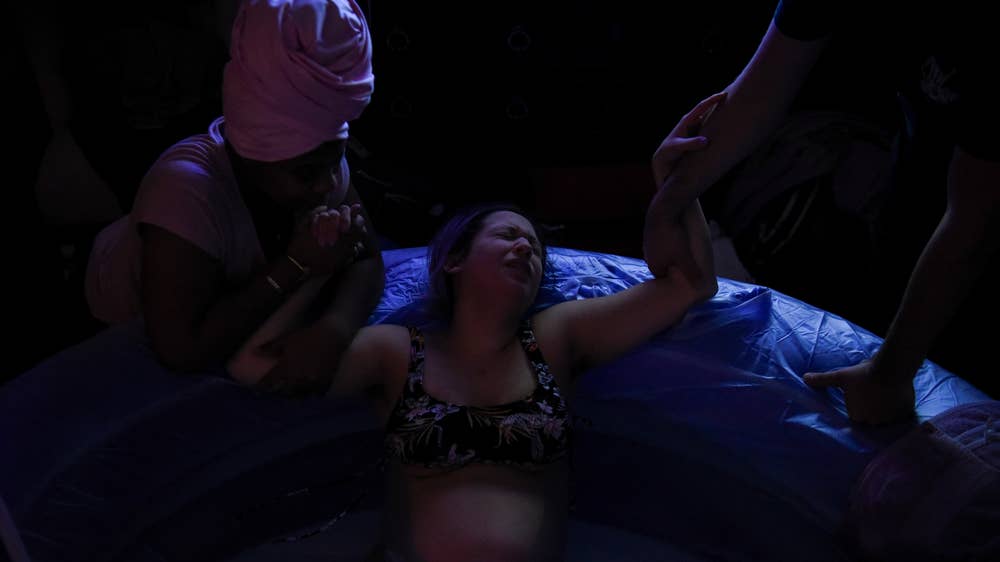

1/23
Nancy holds hands with Nichollette and Ryan as she experiences contractions in a birthing tub
Reuters

2/23
Nancy Pedroza, 27, who is pregnant, sits next to Ryan Morgan, 30, her partner and father to their unborn child, as they relax at Pedroza’s parent’s house in Forth Worth, Texas, where they currently live, during the coronavirus outbreak
Reuters

3/23
Nancy Pedroza attends an appointment with her licensed midwives Susan Taylor, 40, who checks her stomach, and Amanda Prouty, 39, in Taylor’s home office at her house
Reuters

4/23
Nancy takes a brisk walk to try and speed up her contractions with Ryan and her midwives near Taylor’s home where Pedroza plans to give birth
Reuters

5/23
Nancy receives support from Nichollette Jones, her doula
Reuters
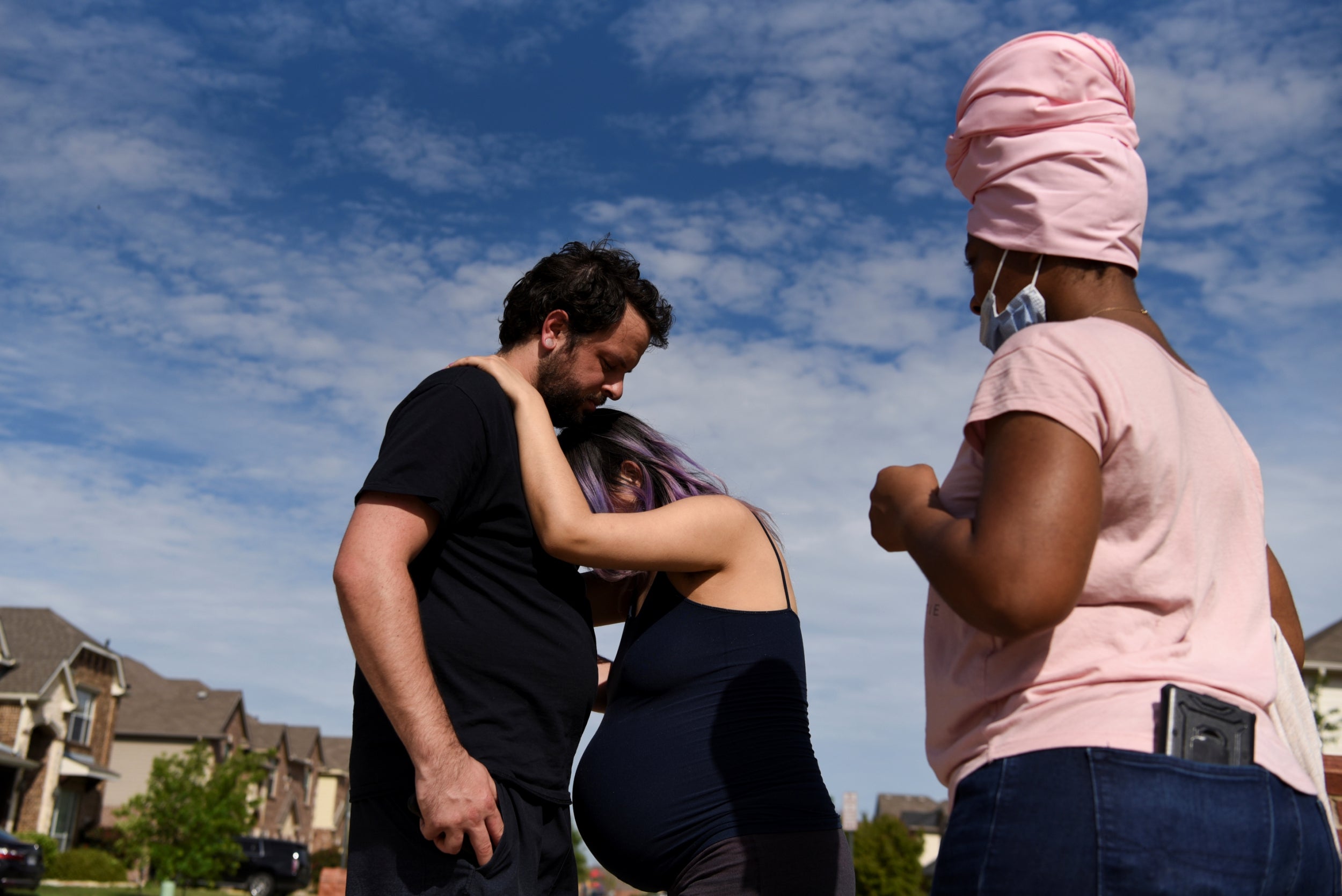
6/23
Nancy experiences contractions
Reuters

7/23
Nancy is supported by Ryan and Nichollette as she experiences contractions while labouring at the home of Pedroza’s licensed midwife, Susan Taylor
Reuters

8/23
Nancy lies on a bed in front of Ryan as he helps to pump her breastmilk to try and speed up her contractions
Reuters

9/23
Nancy experiences contractions as Susan lies on a bed
Reuters
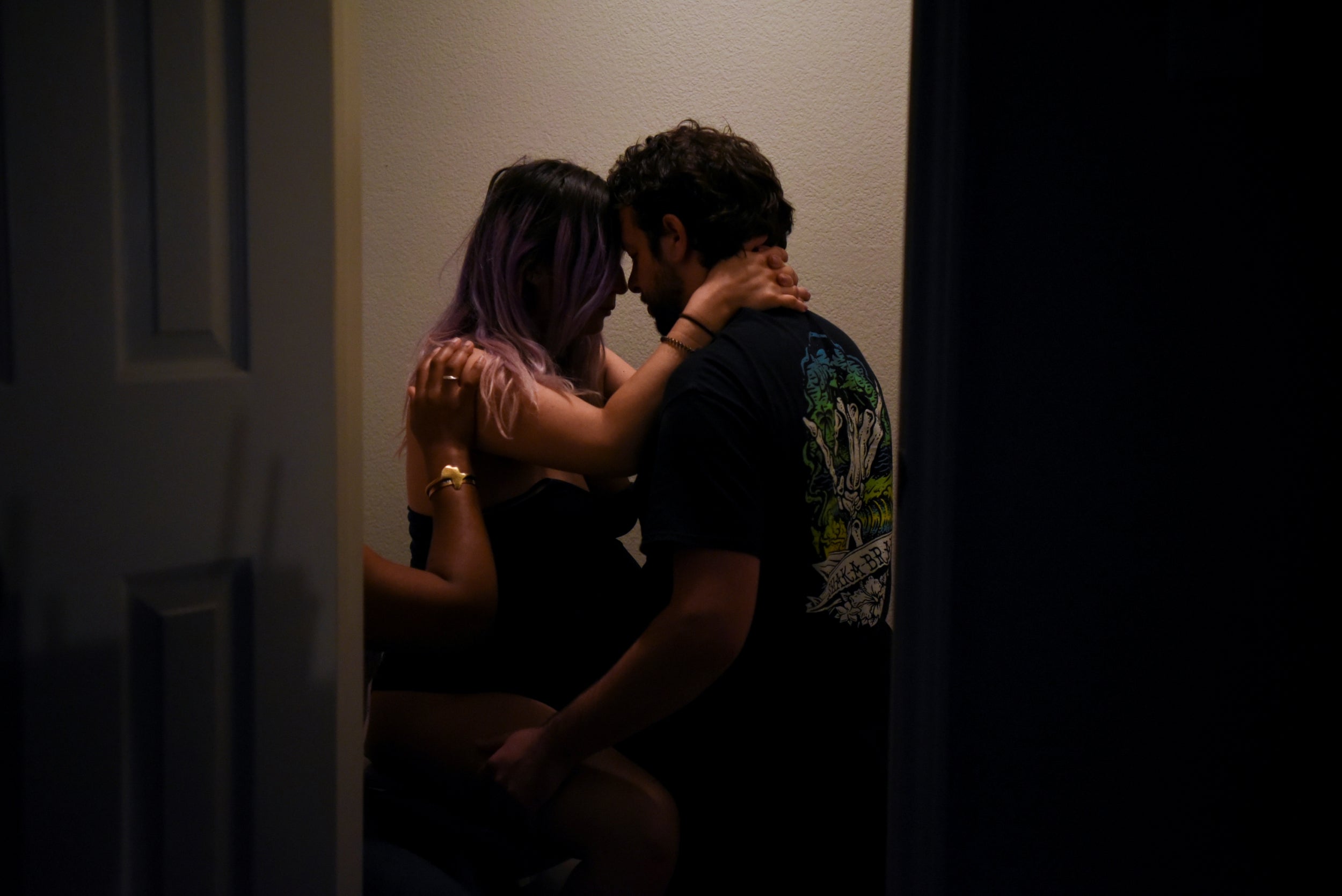
10/23
Nancy embraces Ryan
Reuters

11/23
Nancy is supported by Ryan as she experiences contractions in a birthing tub
Reuters
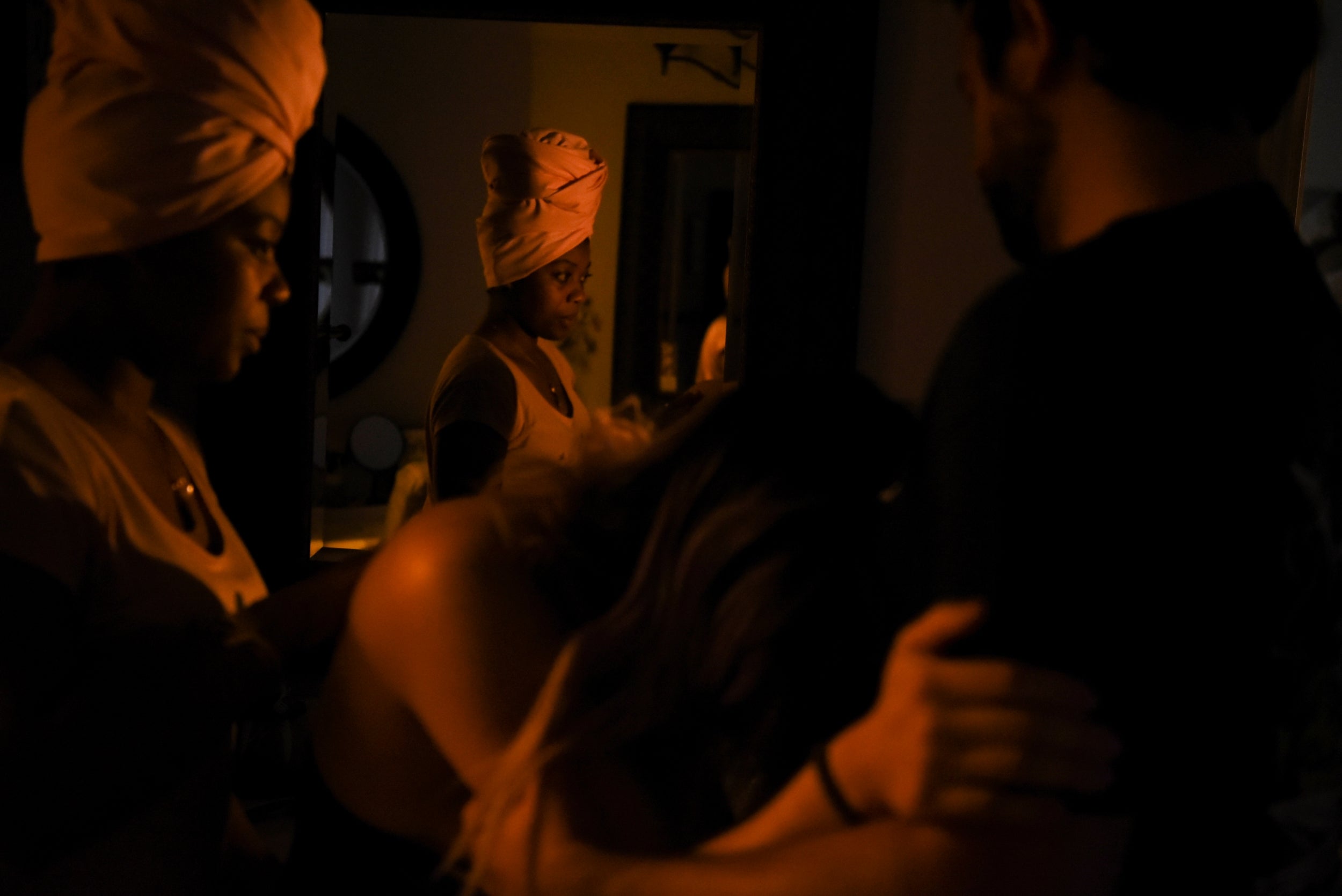
12/23
Nancy experiences contractions
Reuters

13/23
Nancy in a birthing tub
Reuters

14/23
Nancy is placed onto an ambulance stretcher to be taken to hospital by paramedics, after her unborn child’s heartbeat dropped from 130 beats per minute to 30
Reuters

15/23
Nancy is carried on an ambulance stretcher to be taken to hospital by paramedics
Reuters

16/23
Nancy is carried into an ambulance on a stretcher
Reuters

17/23
Nancy holds her one-day old newborn son, Kai Rohan Morgan
Reuters

18/23
Nancy breastfeeds her newborn son at the house of her parents, where they are currently living
Reuters
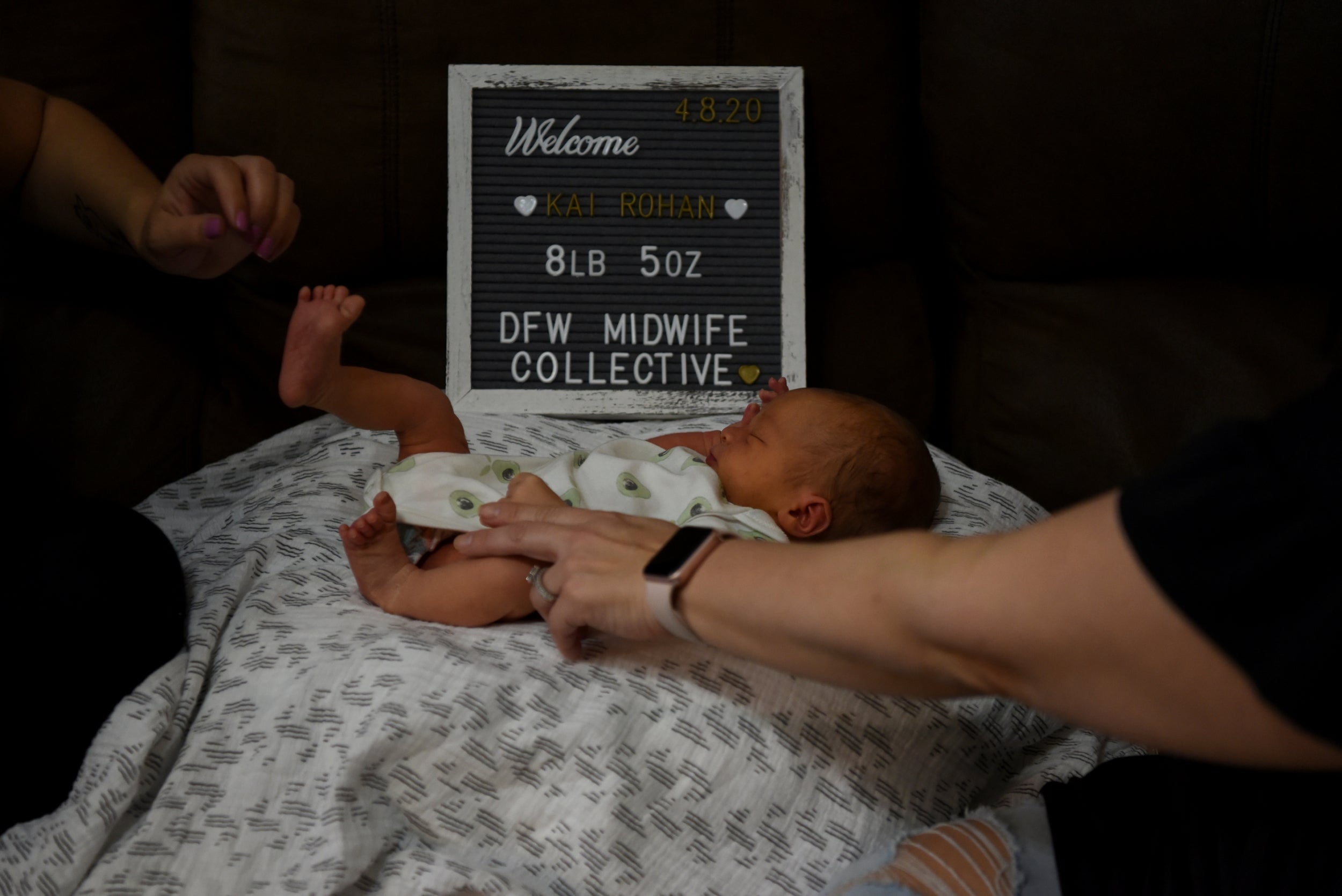
19/23
Susan Taylor positions Kai for a photograph at his newborn screening
Reuters

20/23
Amanda Prouty and Susan Taylor conduct a newborn screening for Kai at Kai’s maternal grandparents’ house
Reuters

21/23
Susan takes two-day old Kai’s temperature while checking if he has tongue tie, an oral condition that can potentially cause issues with feeding
Reuters

22/23
Nancy and Ryan clip the fingernails of their two-day old son
Reuters
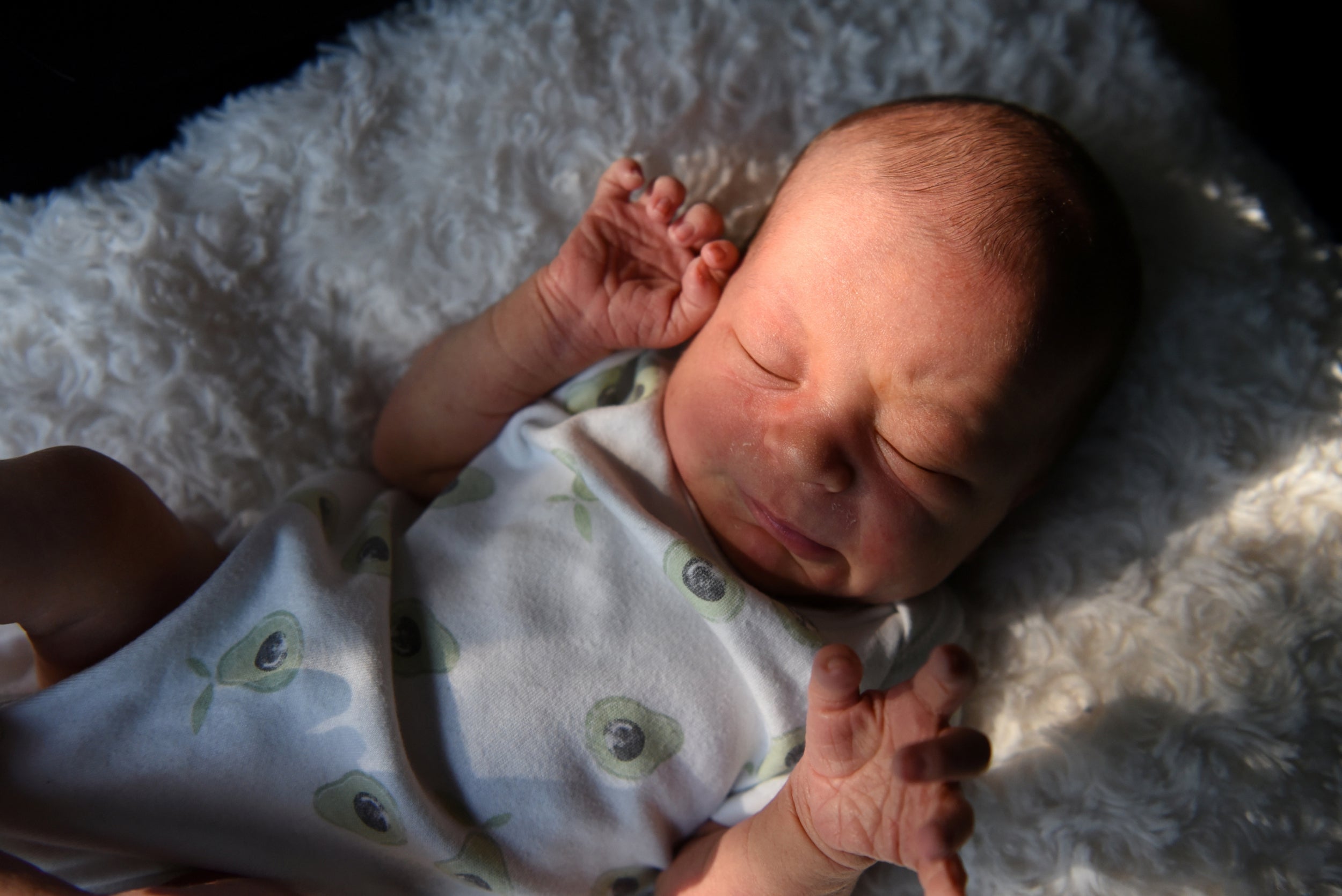
23/23
Kai, who is two days old and is experiencing jaundice, is positioned in the sunlight by his mother Nancy
Reuters

1/23
Nancy holds hands with Nichollette and Ryan as she experiences contractions in a birthing tub
Reuters

2/23
Nancy Pedroza, 27, who is pregnant, sits next to Ryan Morgan, 30, her partner and father to their unborn child, as they relax at Pedroza’s parent’s house in Forth Worth, Texas, where they currently live, during the coronavirus outbreak
Reuters

3/23
Nancy Pedroza attends an appointment with her licensed midwives Susan Taylor, 40, who checks her stomach, and Amanda Prouty, 39, in Taylor’s home office at her house
Reuters

4/23
Nancy takes a brisk walk to try and speed up her contractions with Ryan and her midwives near Taylor’s home where Pedroza plans to give birth
Reuters

5/23
Nancy receives support from Nichollette Jones, her doula
Reuters

6/23
Nancy experiences contractions
Reuters

7/23
Nancy is supported by Ryan and Nichollette as she experiences contractions while labouring at the home of Pedroza’s licensed midwife, Susan Taylor
Reuters

8/23
Nancy lies on a bed in front of Ryan as he helps to pump her breastmilk to try and speed up her contractions
Reuters

9/23
Nancy experiences contractions as Susan lies on a bed
Reuters

10/23
Nancy embraces Ryan
Reuters

11/23
Nancy is supported by Ryan as she experiences contractions in a birthing tub
Reuters

12/23
Nancy experiences contractions
Reuters

13/23
Nancy in a birthing tub
Reuters

14/23
Nancy is placed onto an ambulance stretcher to be taken to hospital by paramedics, after her unborn child’s heartbeat dropped from 130 beats per minute to 30
Reuters

15/23
Nancy is carried on an ambulance stretcher to be taken to hospital by paramedics
Reuters

16/23
Nancy is carried into an ambulance on a stretcher
Reuters

17/23
Nancy holds her one-day old newborn son, Kai Rohan Morgan
Reuters

18/23
Nancy breastfeeds her newborn son at the house of her parents, where they are currently living
Reuters

19/23
Susan Taylor positions Kai for a photograph at his newborn screening
Reuters

20/23
Amanda Prouty and Susan Taylor conduct a newborn screening for Kai at Kai’s maternal grandparents’ house
Reuters

21/23
Susan takes two-day old Kai’s temperature while checking if he has tongue tie, an oral condition that can potentially cause issues with feeding
Reuters

22/23
Nancy and Ryan clip the fingernails of their two-day old son
Reuters

23/23
Kai, who is two days old and is experiencing jaundice, is positioned in the sunlight by his mother Nancy
Reuters
His comments were echoed by other scientists advising the government, including Dr Nicholas Davies, who said: “An earlier lockdown would have been substantially better in terms of health outcomes that we’ve seen, in terms of deaths.”
Dr Davies, who sits on the subgroup of scientific modellers, said understanding of localised spikes will be increasingly important in curbing the spread of the virus.
Professor Matt Keeling, another expert adviser, admitted that more focus had been on hospitals than care homes.
He told the committee: “We thought about it and said ‘care homes are important’, and we thought they were being shielded and we probably thought that was enough.
“Maybe we should have been jumping up and down and saying ‘has anyone checked care homes, has anyone checked care homes this week, can anyone tell us what’s happening’, but I think there was just a lot of focus at an incredibly busy time.”
And former chief scientific advisor to the government Sir David King said deaths could have been significantly lower if lockdown had begun a week earlier.
Speaking on Newsnight, he said: “It’s certainly going to be more than half if we had gone a week earlier, it would have been halved if we’d gone three and a half days earlier into lockdown. That is the very clear conclusion.”
The prime minister refused to say whether the lockdown should have been brought in sooner.
Asked about what his biggest regret from the crisis is, Mr Johnson said: “Of course we are going to have to look back on all of this and learn lessons that we can.
“But, frankly, I think a lot of these questions are still premature.
“There are lots of things, lots of data, things that we still don’t know, and this epidemic has a long way to go.”
But Jonathan Ashworth, the shadow health secretary, said the comments revealed that the government had been too slow to act and urged ministers to accept that mistakes had been made.
“The tragic reality is Boris Johnson was too slow to take us into lockdown, too slow on PPE for health and care staff, too slow on testing and now too slow on putting in place a functional test and trace regimes.
“Ministers must accept they made mistakes and reassure they have learnt lessons so we can save as many lives as possible and minimise harm from this horrific deadly virus.”
Elsewhere, a leaked paper prepared for one of the scientific committees advising the government called for a full lockdown two weeks before the rules were brought in.
The paper by Steven Riley, professor at Imperial College London, finds that mitigation, the strategy the government was following at the time, would lead to 1.7 million deaths, according to Channel 4 News.


